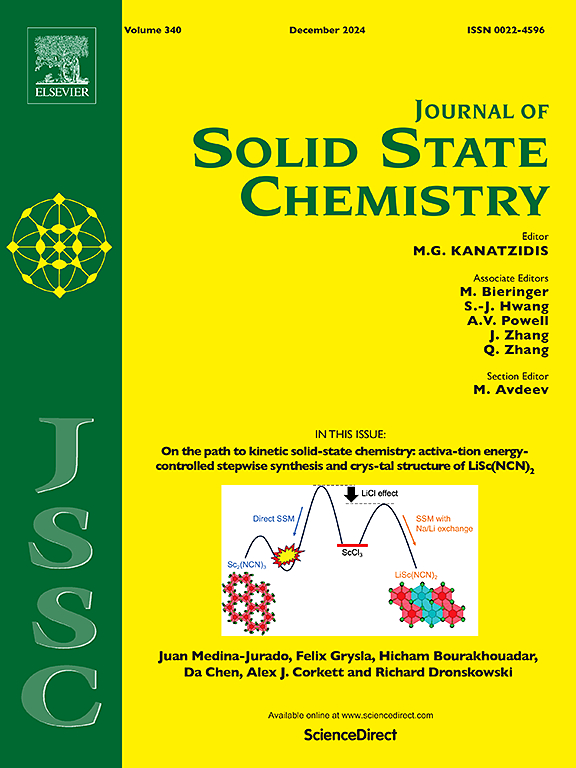Investigation on the mechanism of different valence states of copper-based catalysts to regulate catalyst ignition at low temperature
IF 3.5
3区 化学
Q2 CHEMISTRY, INORGANIC & NUCLEAR
引用次数: 0
Abstract
Carbon monoxide (CO) emissions from vehicle exhaust pose a serious threat to both environmental ecology and human health. Copper-based oxides (CuOx) have demonstrated remarkable potential during the cold-start phase of automobiles by catalytically oxidizing CO to CO2. In this study, we focused on the low-temperature oxidation performance of copper-based catalysts and investigated the effects of calcination temperature and precipitant concentration on catalyst performance. At a Cu2+/Cu+ ratio of 1.44, a precipitant concentration of 0.3 mol/L, and a calcination temperature of 280 °C, the catalysts exhibited a cubic structure, with an enhancement in specific surface area, a larger pore volume, and an increase in the oxygen concentration of the lattice. The ignition temperature was optimized (T50 = 130 °C), during which the catalyst primarilyd follows the Mars-Van Krevelen (MvK) mechanism and the Eley-Rideal (ER) mechanism occurs under oxygenation.

铜基催化剂不同价态调控催化剂低温着火机理的研究
汽车尾气中的一氧化碳(CO)排放对环境生态和人类健康构成严重威胁。铜基氧化物(CuOx)通过将CO催化氧化为CO2,在汽车冷启动阶段显示出巨大的潜力。本研究主要研究了铜基催化剂的低温氧化性能,考察了焙烧温度和沉淀剂浓度对催化剂性能的影响。当Cu2+/Cu+比为1.44,沉淀剂浓度为0.3 mol/L,煅烧温度为280℃时,催化剂呈现立方体结构,比表面积增大,孔体积增大,晶格氧浓度增加。优化了催化剂的点火温度(T50 = 130℃),在此过程中,催化剂主要遵循Mars-Van Krevelen (MvK)机制,在氧化作用下发生Eley-Rideal (ER)机制。
本文章由计算机程序翻译,如有差异,请以英文原文为准。
求助全文
约1分钟内获得全文
求助全文
来源期刊

Journal of Solid State Chemistry
化学-无机化学与核化学
CiteScore
6.00
自引率
9.10%
发文量
848
审稿时长
25 days
期刊介绍:
Covering major developments in the field of solid state chemistry and related areas such as ceramics and amorphous materials, the Journal of Solid State Chemistry features studies of chemical, structural, thermodynamic, electronic, magnetic, and optical properties and processes in solids.
 求助内容:
求助内容: 应助结果提醒方式:
应助结果提醒方式:


